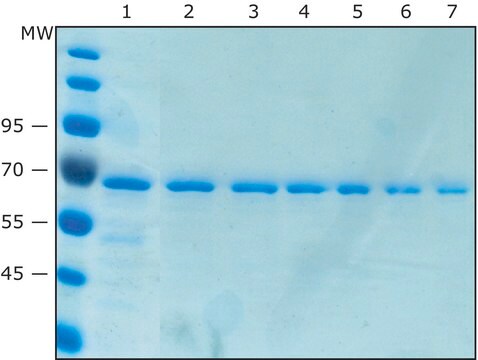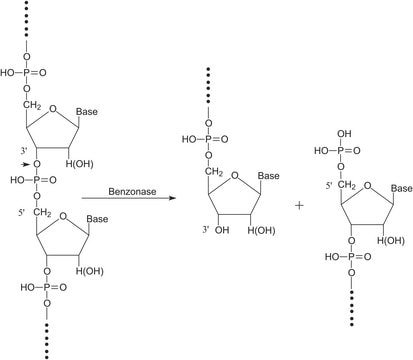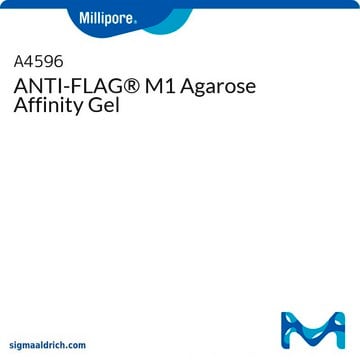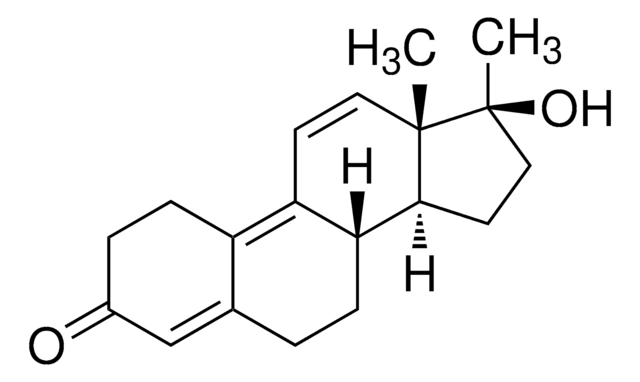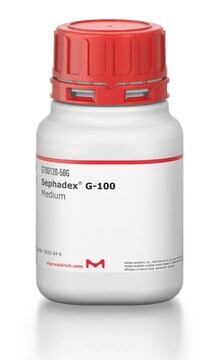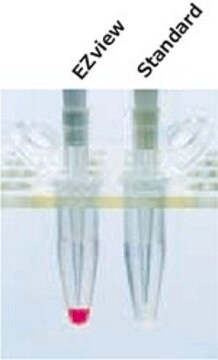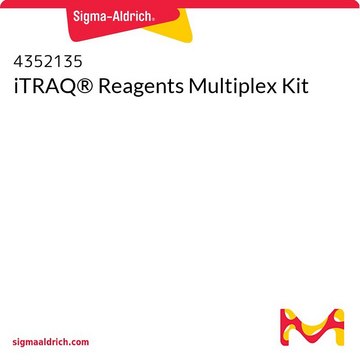A7345
Anti-V5 Agarose Affinity Gel antibody produced in mouse
purified immunoglobulin, clone V5-10
Synonym(s):
Monoclonal Anti-V5
Sign Into View Organizational & Contract Pricing
All Photos(1)
About This Item
Recommended Products
biological source
mouse
conjugate
agarose conjugate
antibody form
purified immunoglobulin
antibody product type
primary antibodies
clone
V5-10, monoclonal
analyte chemical class(es)
proteins (V5)
technique(s)
affinity chromatography: suitable
immunoprecipitation (IP): suitable
capacity
2.5 nmol/mL, gel (V5 fusion protein)
shipped in
wet ice
storage temp.
2-8°C
Looking for similar products? Visit Product Comparison Guide
General description
Anti-V5 Agarose Affinity Gel is made of purified immunoglobulin fraction of monoclonal anti-V5 isolated from ascites fluid of the V5-10 hybridoma coupled to cyanogen bromide-activated beaded agarose. The purified monoclonal antibody is immobilized on agarose.
The Anti-V5 Agarose Affinity Gel is composed of the monolonal anti-V5 antibody conjugated to cyanogen bromide-activated beaded agarose. The antibody recognizes the V5-tagged recombinant fusion proteins expressed in transfected mammalian cells.
Specificity
Recognizes V5 Tag (GKPIPNPLLGLDST) fusion proteins
Application
Anti-V5 Agarose Affinity Gel antibody produced in mouse has been used in immunoprecipitation and recombinant protein purification.
Biochem/physiol Actions
Recombinant DNA technology enables the attachment of genes of interest to specific sequences or genes that can provide ′affinity handles′ designed to enable the selective identification and purification of the protein of interest. The addition of a V5 tag sequence (GKPIPNPLLGLDST) to a given gene creates a stable fusion product that does not appear to interfere with the bioactivity of the protein, or with the biodistribution of the tagged product. Many recombinant proteins have been engineered to express a short sequence derived from the V5 from simian virus known as V5-tag. Anti-“tag” agarose conjugates may facilitate the detection, isolation and purification of these proteins.
Physical form
Suspension of beaded agarose (1:1 v/v) in 0.01 M phosphate buffered saline, containing 15 mM sodium azide.
Storage and Stability
For continuous use and extended storage, store at 2 °C to 8 °C. Do not freeze.
Disclaimer
Unless otherwise stated in our catalog, our products are intended for research use only and are not to be used for any other purpose, which includes but is not limited to, unauthorized commercial uses, in vitro diagnostic uses, ex vivo or in vivo therapeutic uses or any type of consumption or application to humans or animals.
Not finding the right product?
Try our Product Selector Tool.
Storage Class Code
10 - Combustible liquids
WGK
WGK 3
Flash Point(F)
Not applicable
Flash Point(C)
Not applicable
Choose from one of the most recent versions:
Already Own This Product?
Find documentation for the products that you have recently purchased in the Document Library.
Arko Dasgupta et al.
PLoS genetics, 11(5), e1005215-e1005215 (2015-05-16)
Most organisms on earth sense light through the use of chromophore-bearing photoreceptive proteins with distinct and characteristic photocycle lengths, yet the biological significance of this adduct decay length is neither understood nor has been tested. In the filamentous fungus Neurospora
Q Meng et al.
Analytical biochemistry, 421(2), 351-361 (2011-11-01)
Quantitation of individual monoclonal antibodies (mAbs) within a combined antibody drug product is required for preclinical and clinical drug development, including pharmacokinetic (PK), toxicology, stability, and biochemical characterization studies of such drugs. We have developed an antitoxin, XOMA 3AB, consisting
Birger Herzog et al.
Molecular biology of the cell, 22(15), 2766-2776 (2011-06-10)
In endothelial cells, neuropilin-1 (NRP1) binds vascular endothelial growth factor (VEGF)-A and is thought to act as a coreceptor for kinase insert domain-containing receptor (KDR) by associating with KDR and enhancing VEGF signaling. Here we report mutations in the NRP1
Mariana Fernandez-Caggiano et al.
The Journal of biological chemistry, 291(19), 10399-10410 (2016-03-06)
The role and responses of the dimeric DJ-1 protein to cardiac oxidative stress is incompletely understood. H2O2 induces a 50-kDa DJ-1 interprotein homodimer disulfide, known to form between Cys-53 on each subunit. A trimeric 75-kDa DJ-1 complex that mass spectrometry
Cynthia Dayer et al.
The Journal of biological chemistry, 290(22), 13763-13778 (2015-04-01)
Solid tumor growth triggers a wound healing response. Similar to wound healing, fibroblasts in the tumor stroma differentiate into myofibroblasts (also referred to as cancer-associated fibroblasts) primarily, but not exclusively, in response to transforming growth factor-β (TGF-β). Myofibroblasts in turn
Our team of scientists has experience in all areas of research including Life Science, Material Science, Chemical Synthesis, Chromatography, Analytical and many others.
Contact Technical Service
